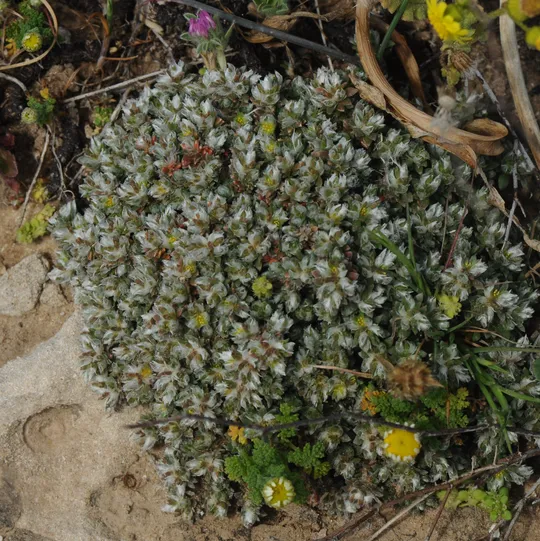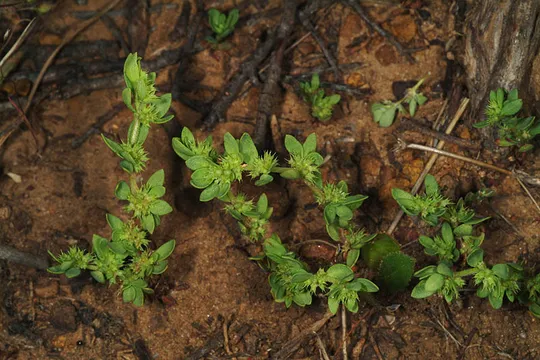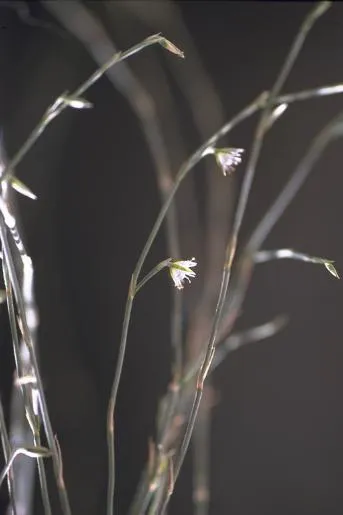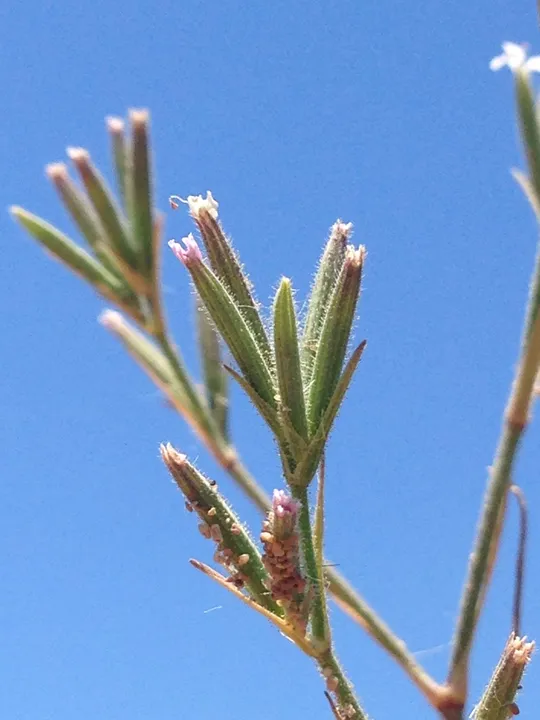Upright Chickweed
Moenchia erecta
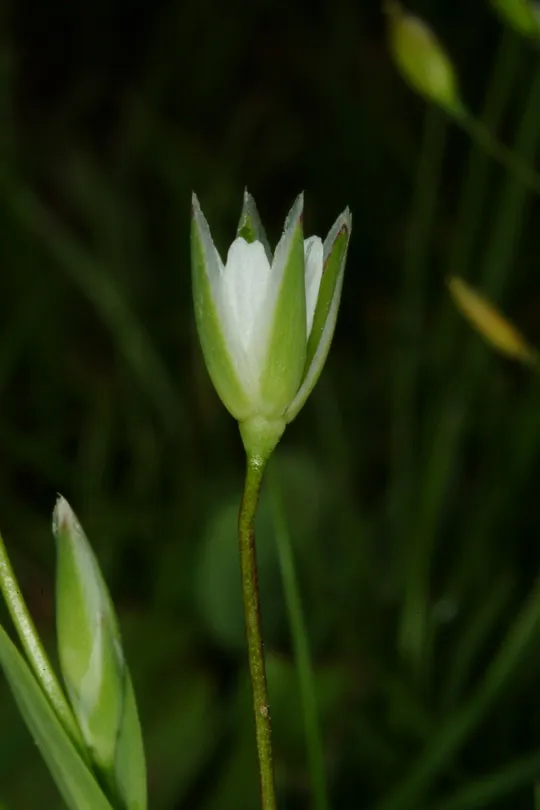
Moenchia erecta is found in the Upper Galilee and in the northern Golan Heights at nine sites, all at an altitude of 800-1100 meters and at one site on Mount Keta at the foot of Mount Hermon. It is possible that there are as many as 15 sites. In the Upper Galilee, it was first found in 1990, north of Dalton Lake in the rare species survey. This was also the first evidence of its existence in the western part of Israel. M. erecta was found in an additional three sites adjacent to the Dalton-Mount Yohanan section, but there is concern that it did not survive throughout the area, due to subsequent development of orchard farming. In the Golan, it is found in the Odem Forest section and in Tel Abbas.
Herbaceous areas that
are moist in winter, on basaltic, sometimes rocky soil.
The Moenchia populations in the Mediterranean Basin
are currently classified as a subspecies of M. erecta. In the past, they were included in an independent
species named M. octandra. Apparently M. erecta has two subspecies, one – Northern European
characterized by a short calyx equal in length to the corolla and four stamens
(Cullen. J. in Davies, 1967) and the second – Mediterranean characterized by a
calyx that is longer than the corolla and eight stamens.
·
Moenchia erecta populations are
small and the plants are dispersed in a scattered and not clumped distribution
pattern. The species is difficult to identify in the field because of its
diminutive size and its inconspicuous flowers.
·
Moenchia erecta sites are easily
accessible and this creates threats: the Galilee sites are located close to populated
areas and agricultural areas, and those in the Golan Heights are adjacent to
roads. The Galilee populations are threatened by agricultural development. All
the sites in both the Galilee and the Golan Heights are subject to strong
grazing pressure by cattle that eat the plants.
·
The Dalton Heights and Mount Yohanan
areas in the Upper Galilee are not located within nature reserves, whereas the
sites in the Golan Heights are located in nature reserves.
·
Although M. erecta is known from many countries in the
Mediterranean Basin, it has been reported from relatively few sites in each
country and may be rare on a global scale. There is one record of regional
extinction from Switzerland.
Moenchia erecta populations in
known sites should be subject to long-term monitoring to study and understand
the demographic trends in its populations. Additional surveys should be conducted
in similar habitats in the northern and eastern Golan in order to verify the
existence of M. erecta there. A nature
reserve should be declared in the Dalton Heights, that should include, in
addition to M. erecta, other unique
species that are also endangered, such as Antinoria insularis,Vicia hulensis,
Eryngium barrelieri, Colchicum brachyphyllum and others.
Moenchia
erecta is found throughout the entire
Mediterranean Basin, although mostly in fragmented populations. The species has
been recorded in Spain and Portugal, southern France, Malta, Sardinia, Corsica,
Italy, Algeria, Tunis, Turkey (Black Sea and Izmir coasts), Syria (Ǧebel Druz),
western Lebanon and northern Israel. Our region is the southern limit of its
distribution.
Moenchia
erecta is a small rare annual plant that grows on moist basaltic
soil in the Galilee and the Golan Heights. The plant grows only on a small
number of sites and Israel is the southern limit of its global distribution. Its
growth sites are easily accessible and vulnerable to damage from agricultural
development and cattle grazing. It is possibly also rare in other Mediterranean
countries.
Current Occupancy Map
| 1000 squre meter pixel | 5000 squre meter pixel | 10000 squre meter pixel | |
|---|---|---|---|
| number of observations | 0 | 0 | 0 |
| in total pixels | 0 | 0 | 0 |
| Family | Caryophyllaceae |
| Classification | On the endangered species list |
| Ecosystem | Mediterranean |
| Chorotype | Mediterranean |
| Conservation Site | Odem Forest |
| Rarity |
1
3
6
|
|---|---|
| Vulnerability |
0
2
4
|
| Attractiveness |
0
0
4
|
| Endemism |
0
0
4
|
| Red number |
1
3.2
10
|
| Peripherality | N |
| IUCN category | DD EW EX LC CR EN VU NT |
| Threat Definition according to the red book | Vulnerable |
 Based on:
Based on:
